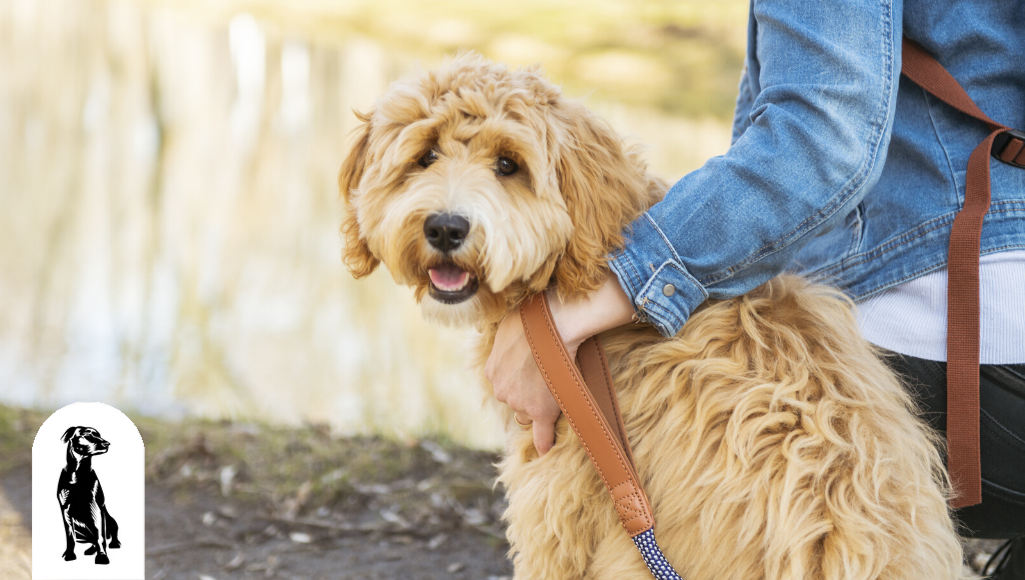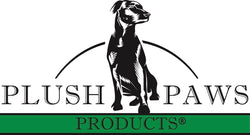
Goldendoodles have been trending for quite some time now, and chances are, you know people who have one and they gush about them regularly. But what’s the big draw? Why are there Goldendoodle playgroups and a cult-like fascination with them? Let’s find out. Keep reading and learn about why and when these muppet-like dogs became a thing.
History of Goldendoodles
Goldendoodles are a mix of a poodle and golden retriever and were bred for a specific reason: for those with allergies to fur. Here’s why. In 1969, a breeder Monica Dickens mixed a golden retriever with a poodle to allow those people with allergies to enjoy a breed without the problem of shedding. In the 1980s, a breeder at the Royal Guide Dog Association of Australia named Wally Conron, received a letter from a woman in Hawaii who was looking for a dog that didn’t shed, because her husband was allergic to fur. Conron took on the challenge, knowing that at least the traditional poodle, which comes as close to a non-shedding breed as possible, would have to be part of the mix.At first, he bred the poodle with a Labrador retriever from Sweden, a good working dog. The labradoodle was born. Originally, the breed wasn’t well-received since people preferred purebred dogs. But, because the name was unique, a branding push catapulted it to stardom. In the 90s, mixing poodle breeds became popular, and in 1992, the Goldendoodle name was adopted. Owners loved its temperament and the hypoallergenic benefit. This was just the beginning of the mixed breeds, because soon after, other poodle crossbreeds popped up, including:
- Cockapoos (cocker spaniel and poodle)
- Aussiedoodles (Australian shepherd and poodle)
- Irish doodles (Irish setter and poodle)
- Bernedoodles (Bernese mountain dog and poodle)
- Peekapoo (Pekingese and miniature poodle)
- Saint Bernadoodle (saint bernard and poodle)
- Sheepadoodles (sheepdog and poodle)
- Schnoodles (schnauzer and poodle)
This isn’t an exhaustive list, and currently, there are many poodle mix options, so you can find a dog with the traits you want while still enjoying the benefits of the poodle coat.

Goldendoodle Care
The fur of a Goldendoodle varies; some have wiry, curly hair like their poodle ancestors or shaggier and straight fur like golden retrievers. Usually, their coat is between the two extremes, hence why they still need to be brushed often to remove dead hair and prevent matting. It also helps to reduce any minimal shedding.
Because they have so much energy, Goldendoodles require daily exercise such as going for walks, runs, hikes and swims. They make great fetch partners because of their playful nature and retriever characteristics. Ensuring they have a fenced yard to run in is ideal, but they shouldn’t be kept outside all day. They are a social breed that needs to be with their pack, and they get along with other people and other dogs, so socializing is essential if you are thinking of owning one or already own one.
Take care of their oral care by brushing their teeth daily to prevent gum disease and reduce bad breath. Also, trim their nails about twice a month. Teething puppies also experience pain much like a human infant when their teeth come in, so give puppies ice cubes, unique dog toys designed for teething, and frozen washcloths to chew for relief.
Grooming
Goldendoodles need regular grooming if they grow long hair since it can cover their eyes or get between their toes, and although they are considered to be a non-to-light shedder, you still need to keep their coat short. Clip their hair every six to eight weeks and brush it at least every few weeks. It’s best to brush against the growth of the hair first with a slicker brush, followed by a medium or wide-toothed comb. The reason being is the slicker brush removes all the loose hair, and the comb eliminates the tangles. The benefits of brushing any dog’s coat are better circulation, shinier and healthier coat, and improved bonding.
Training
Another reason why Goldendoodles are so popular is due to their obedience and ability to train easier than other breeds. They are smart and take well to training precisely because of their eagerness to please. They respond best to positive reinforcement, backed by rewards, and will gladly show you their tricks for a yummy treat. Clicker training or mark and reward training is a form of positive reinforcement dog training. The timing of the click is vital, with every click deserving of a reward.One thing to note is that modern-day Goldendoodles haven’t been bred to hunt as their ancestors. But, they are great athletes who love to play.

Goldendoodle’s Health Pedigree
Families are drawn to Goldendoodles since they typically have excellent health. Although they can inherit health problems from their breed genetics, it’s also possible they enjoy good health due to their genetic diversity or the “hybrid vigor.” This common term is used when describing mixed breeds, noting the health and vitality of hybrids between two unrelated breeds. One caveat is that Goldendoodles will usually exhibit their enhanced health only when their parents are purebred golden retrievers and poodles who have been bred responsibly with no hereditary health issues.
One common health problem that Goldendoodles do have is hip dysplasia, so consider a hip exam to keep this potential health issue in check. Also, eye disorders are a common problem among poodles and golden retrievers, so an annual eye exam is a good idea. Ear infections also afflict Goldendoodles if their ears get wet due to their droopy design that prevents their ears from draining easily.
Diet and Nutrition
A good quality diet is vital for Goldendoodles to keep them active, healthy, and strong. Dry kibble seems to be the best choice, one that’s high in protein and fat. Dry kibble also helps remove plaque and promote dental hygiene. Keep in mind, Goldendoodles have common allergies to corn, wheat, soy, and dairy, so think about giving them food and treats that contain no grains. Meat should be the first ingredient in their diet.
Pros and Cons
The pros for adopting or purchasing a Goldendoodle include:- A friendly breed that does well with children and other pets
- Smart and easy to train
- Suitable for people with pet allergies
- Loves to be with their family
- Pleasant demeanor
- Long lifespan
- Doesn’t do well being left alone for long periods
- Needs daily exercise of at least 30 minutes to an hour
- Susceptible to food allergies that require a higher-quality of allergen-free food
- Prone to hip dysplasia

Need Car Seat Covers for Your Goldendoodle?
We have been smitten with Goldendoodles with their intelligence and gentle nature, but we fall head over heels by their looks. Who wouldn’t want to cuddle with the fluffballs? If you’re considered getting one of these adorable pups or have one, think about getting a dog car seat cover to protect your fabric. Although Goldendoodles don’t shed or shed very little, they still can mess up a car’s interior with wet or muddy paws after a day at the lake. Or, if they happen to be carsick, car seat covers will prevent stains from those effects.We have various sizes, shapes, and designs to match your vehicle, so check out our shop or contact us for more details.
